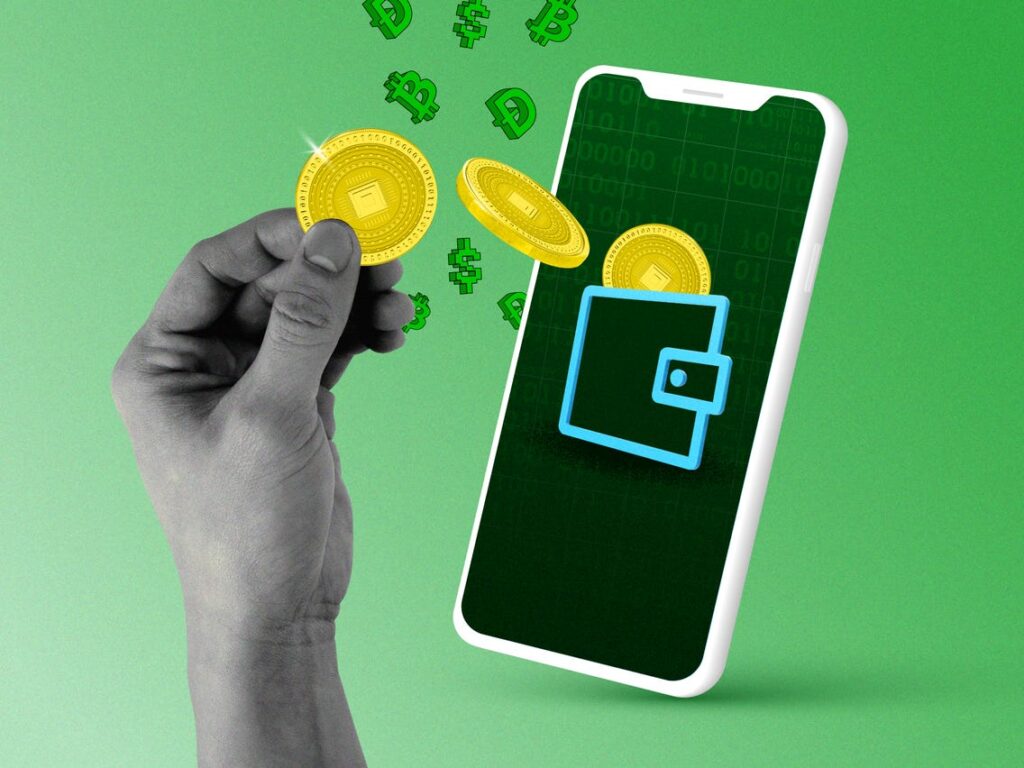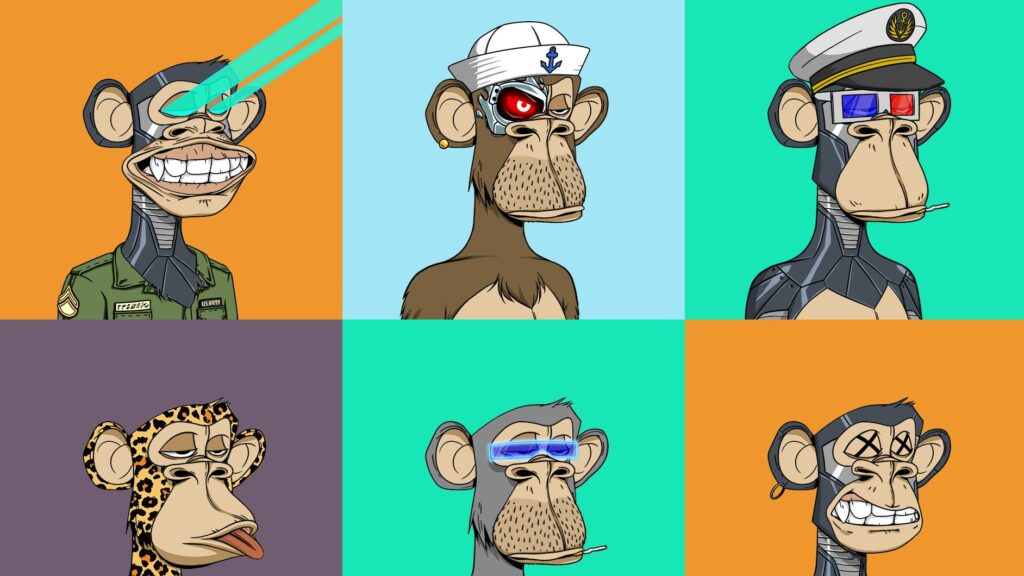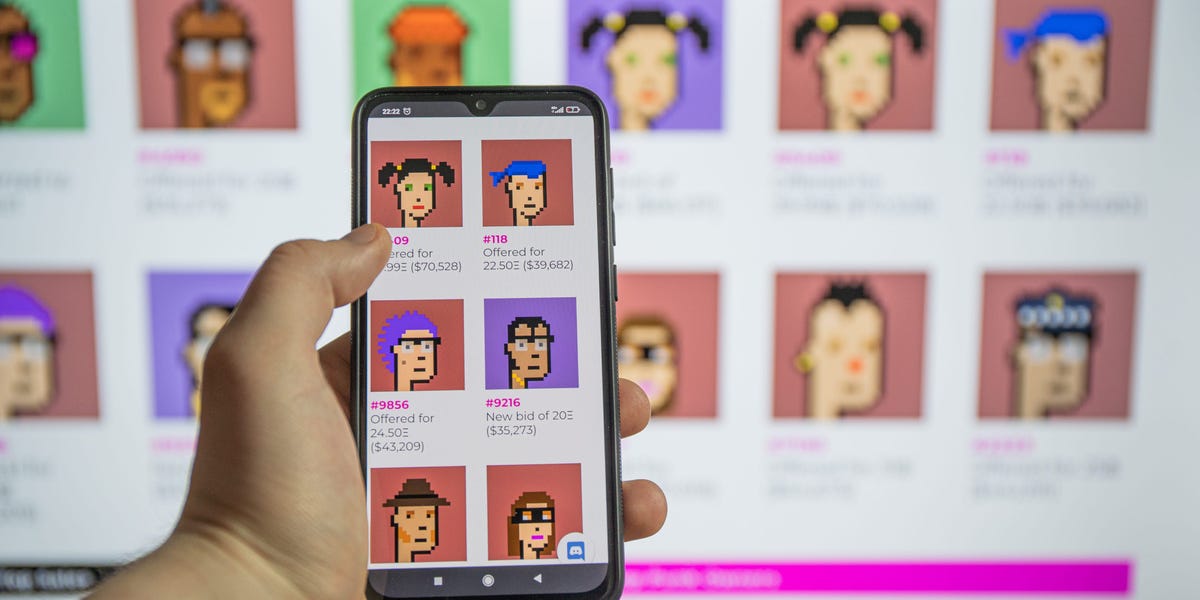NFTs saw its biggest gains so far in 2021. With a mainstream adoption around the world, from just a 3 letter acronym to being one of the most searched topics on Google internationally
Here’s is your guide to understanding NFTs in 2022
To understand how NFTs work you need to understand how the blockchain Network and smart contracts work. All NFTs are created with smart contracts and deployed on a blockchain.
A smart contract is a code snippet that can be deployed on a blockchain. It facilitates transactions between multiple users without the need for a third party. Smart contracts when deployed on a blockchain are immutable.
A blockchain is a database of information recorded in such a way that the information is difficult or impossible to change. Providing an extra layer of security for all the information stored on the blockchain.
What is an NFT?
NFT: non-fungible token
The word Fungible means a commodity that is freely interchangeable with another in satisfying an obligation
Non-fungible means a commodity that is not freely interchangeable. Where each commodity is unique.
And Token is a digital representation of an object on a blockchain.
Putting it all back together and adding a little sauce;
NFTs are unique tokens with attributes used to represent digital or real-world assets and ownership of those assets on a blockchain.
Fundamentally an NFT is just a representation of an asset on a blockchain, with the attributes of that asset (For example; properties of the asset, identification number of the asset, ownership of the asset, the meta-data of the Asset, etc) also stored on the blockchain.
Some examples of things that can be represented on a blockchain as an NFT:
- Digital art
- Music
- Physical art.
- GIFs
- Collectibles
- Music
- Videos
- In-game items: character skins, game weapons.
- Real World Items:
- Deeds to a car
- Tickets to a real world event
- Tokenized invoices
- Legal documents
- Signatures, and the list goes on
Most Popular Types of NFTs

Digital Art NFTs or Crypto Art:
When most people hear the acronym “NFT” the first thing that comes to mind is digital art. These are by far the most popular types of NFTs.
Digital Art NFTs: are a type of NFT, where the value of the token is derived from a digital image that is attached to the token, these can come in different forms from pixelated pictures of animals, to doodles, to screenshots of tweets, the list goes on.
Digital Art NFTs gained their popularity because they became a way for digital artists and traditional artists alike to put out their work and allow their work to be viewed and bought by a wider and younger audience.
Benefits that Crypto art offer compared to physical art:
Making 10% in royalties from every NFT sale without a middleman:
With the help of smart contracts which are the building blocks of NFTs, artists can code into the smart contract of an NFT to gain a percentage from every sale of the NFT long after the artist has sold the NFT.
Traction/ interest from CRYPTO AUDIENCE:
Digital artists are seeing their lives change thanks to huge sales to a new crypto-audience.
A new way for artists to interact with their audience :
Celebrities are joining the NFT craze as a new opportunity to connect with their fans.
Blockchain interoperability:
Meaning an NFT built on a blockchain is recognised throughout the blockchain making the NFT compatible with anything built on that same blockchain.
NFTs for Decentralized loans:
Crypto art can be used as collateral for a decentralised loan.
How to get NFTs
There are a couple of ways to acquire NFTs, keep in mind that while you don’t always need to pay to get NFTs, to acquire the most valuable NFTs you will most likely have to buy them. With that in mind, here are a few ways to acquire NFTs;
- Buying NFTs
- Minting NFT
- Winning NFTs through participating in competitions and giveaways
- Completing online courses and challenges
- Attending events
- Joining DAOs
- Creating your own NFTs
How to store NFTs
NFTs should be stored in a software crypto-wallet which is protected by your 12-word seed phrase, a password, and touch authentication. For the best security, you can store NFTs in a cold storage hardware wallet.
Setting up your crypto wallet
There 3 main types of crypto wallets; Hosted wallet, a Non-custodial wallet, Hardware wallet.

• Hosted wallets:
If all you want to do is buy, sell, send, and receive cryptocurrencies then a hosted wallet is the easiest solution. They don’t give you full access to all the features of a non-custodial crypto wallet, but they do come with added security and ease of use, with accounts of hosted wallets allowing for easy password recovery and the ability to buy cryptocurrencies with fiat currencies
• Non-custodial wallets:
They are sometimes referred to as self-custody wallets, some examples are Coinbase Wallet or MetaMask. With non-custodial wallets you have full control of your wallet, you are in charge of storing and making sure your private key or seed phrase are safe without it no one can access the account. Self-custody wallets don’t allow you to buy crypto using traditional currencies (like US dollars or Naira), so you’ll need to transfer crypto to your wallet to make transactions.
• Hardware wallets:
Hardware wallets are more secure than other wallets because they are less susceptible to being hacked. They are also more expensive to set up because you have to pay an upfront cost to buy them compared to Non-custodial and hosted wallets which are free to set up. A physical wallet also doesn’t allow you to buy cryptocurrency using traditional currencies (like US dollars or Euros), so you’ll need to transfer crypto to your wallet to make transactions.

The security of your Crypto-wallet is highly important. If you lose access to crypto wallets then you lose access to all funds. When setting up a custodial wallet and non-custodial wallets you want to be careful with where you store your seed phrase. The seed phrase grants access to the wallet, if your seed phrase falls into malicious hands then so do all the funds and precious NFTs stored on that wallet.
If you’re just starting in the NFTs space your best bet is a non-custodial wallet, it’s free to set up and it gives you full access to all the features of a crypto wallet, but as you grow and expand your NFT portfolio and acquire more valuable art pieces, It is advisable to switch to a hardware wallet as they are the most secure and the least susceptible to hacks.
Selling Digital Art NFTs
If you’re an artist or a creator and you have some art pieces that you want to sell, you might want to consider selling your art as NFTs. Platforms like Opensea which is currently the biggest NFT marketplace online.
By being the go-to location for buying and selling NFTs, Opensea has helped empower a lot of artists, providing a new audience for artists and their artworks, while also being a place where art & NFT lovers alike can go to wet their appetite for crypto arts; Purchasing, Bidding, selling, and fantasizing about NFTs.
In 2021 alone Opensea facilitated $14bn in trading volume from NFTs. Up from $21.7million in 2020. And so far in 2022, just in January. Opensea has already processed over $1bn in transactions.
Not all NFT transactions happen on Opensea though, there are other NFT market places online like; Axie marketplace, Larva labs, Rarible, etc. With all of them facilitating their NFT transactions.
Other NFT transactions happen off-chain (Not-on-a-blockchain). This can happen in person or through other means of transactions, where the transactions are performed without the use of an NFT marketplace.
While Digital art NFTs provided a way for artists to sell their artworks outside of an art gallery, they do not represent the whole picture (pun intended 😏). Digital art only represents a small window to greater possibilities and use cases of NFTs.
Other Forms Of NFTs And Their Use Cases.
NFTs can differ in multiple ways as they can be used to represent different categories of items on a blockchain, all with their attributes. This gives NFTs a wide variety of USE cases, which include but are not limited to;
Fashion and Wearables:
fashion brands like Gucci and Adidas have joined the NFT bandwagon by announcing special collectibles and creating digital assets to interact with their fans.
Crypto Gaming:
NFTs can function in video games as in-game weapons, in-game assets, character skins, and the likes. With the rise in popularity of game skins, In-game NFT assets can be seen as a way to create assets that not only just function native to a single game, but function on a whole list of games that support the token mechanics of the NFTs, and the blockchain on which the NFT is built. In turn, Creating cross-platform interoperability between games. Imagine having a Cristiano Ronaldo Nft skin that you can use when playing FIFA and afterward use that same NFT as a character skin in Fortnite to play battle royale with your friends. – Crazy! yes, I know.
NFTs in DAOs:
NFTs can serve various purposes in DAOs (Decentralized autonomous organizations), an example being the use of special NFTs for staking and voting privileges for organization members. For more info about this check out this article.
Events: With POAP (Proof-Of-Attendance Protocol)
NFTs can be used as a way to verify the attendance of people for an event. POAPs are created by event hosts, after a meeting or an event the POAP NFTs can be distributed to all attending persons, Serving as verifiable proof that people were present during the meeting.
NFTs in the Metaverse:
In the metaverse, an NFT can be used to represent Virtual Land, virtual assets like furniture, clothes, cars, and the like.
Digital identity:
NFTs can serve as a means of identification for people online and offline through the use of their crypto wallets.
NFTs as real-world assets:
NFTs can be used to show ownership of different assets whether digital or physical. An example of this can be a piece of land IRL(in real life) represented on a blockchain as an NFT. Because the NFT is stored on the blockchain, ownership of the land can easily be verified by anyone through the blockchain.
NFTs in 2022 and The future of Crypto art.
Overall the market for NFTs is still growing, sadly the year 2021 didn’t just witness the rise of crypto art we also witnessed the fall of some crypto art projects, a sad awakening for people that invested in those projects.
The rising prices of Crypto art also brought about a whole lot of skepticism towards the digital NFTs market. In turn, bringing about the rise of the phrase “The NFT bubble”. There are many articles online and investor talks about NFTs being a bubble about to pop, predicting a major crash in the current value of NFTs.
The confusion with NFTs is that people think of NFTs as just over-priced pictures that anyone can copy-paste and download online. While that might be true to some extent, It doesn’t depict the full story.
- Can you download any crypto art image to your phone/ computer ? Yes.
- Does downloading the picture of an NFT give you verifiable proof of ownership of the NFT? No.
- Can you sell your image for the same price as the real NFT? – NO.
Thinking of NFTs as just pictures is wrong and quite ignorant because that doesn’t show the full picture (get it 😏. Yeah I used the same pun a second time – sue me).
- Will the market crash? The true answer to that is, No one knows.
In the world of crypto and NFTs we are all just speculators, whether or not you believe in its success or it’s a failure.
(Disclaimer: statements made in this article are not to be considered as investment advice and are just for educational purposes,investing in NFTs and Crypto in general can be very risky. Be careful! )
Understanding the NFT market
Gone are the days when people would naively buy any new NFT project that gets announced in the hopes of making 10x the money paid for the NFT. In today’s markets, investors are more cautious about how they spend their money on NFTs and so should you.
DYOR- Do your research.
Before buying into any NFT project you need to do your research on the project, the community backing the project, and the creators of the project. This cannot be overstated.
Here are a few traits you should look out for before buying into any crypto art project;
- Projects with an active community on Discord or Twitter with future incentives for holders are your best bet.
- The NFT should have a great community that believe in the success of the NFT and love the NFT.
- Owning the NFT should bring profit and add value to the life of the holder
- Serious planning by the creator to improve the project and add value to holders
Some successful NFT projects

- Bored apes yatch club/ mutant apes yatch club.
- Crypto punks
- CLONE X – X TAKASHI MURAKAMI
NFT projects to avoid
- Projects without a community and future incentives for holders.
- Avoid JPEGs (they may look cute but they are worth nothing, only invest in projects that have a community)
- No serious planning by the creator to improve on the project.
Things to do before buying into NFTs
- Do your research on the project.
- Study the NFT market.(the biggest movers, most traded, the ones that keep and rise in value)
- Check the project out on opensea.
- Study the floor price and max price.
- Check the market volume. Scarcity of the volume.
- Try to know the creator / the team behind the project.
- Understand the community behind the NFT
- The future plans for the project.
- The DAILY Trading volume of the NFT.
While there’s still a lot of speculation on NFTs being a bubble about to pop. One thing that stands true is the Interest in NFTs is still on the rise and this time it is not just about digital art but also the rise in interest of other use cases of NFTs.
2021 was a year for the NFT boom, the best part about that is it was only just the beginning.




[…] and Conflux Network Africa. He also writes smart contracts for Aavegotchi. His work is mainly on NFT and DeFi. I have always found some concepts in NFTs and gaming confusing, but his explanations made […]
[…] Temitayo Daniel is a smart contract developer and a cyber security guy who loves renewable energy and electronics. He is a mentor at Web3Bridge and the African Developer Advocate at Conflux Network Africa. He also writes smart contracts for Aavegotchi. His work is mainly on NFT and DeFi. […]